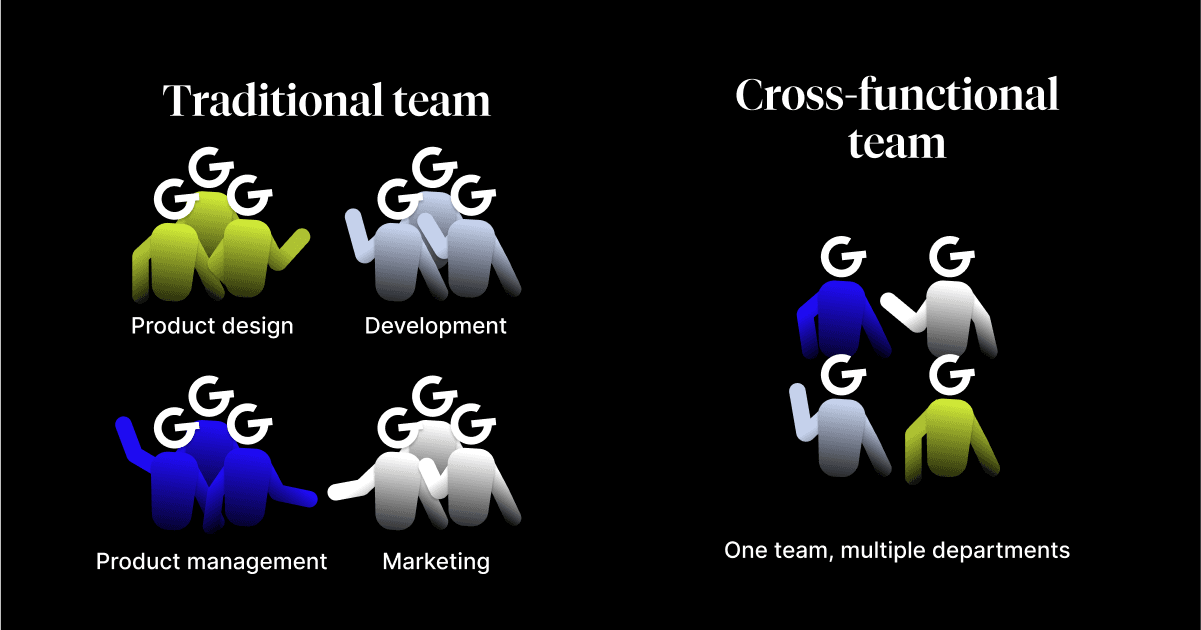
How to build AI solutions that deliver 10× more value for your business

The crisis is receding, inflation is no longer a stinging issue, but the overall macroeconomic situation still doesn't favor growth (March 2024). Small and medium-sized businesses are still somewhat hesitant to invest in new projects, while big players are taking advantage of the slowdown to expand their innovation portfolios.


History shows that a crisis is an ideal time to invest in innovation.
According to McKinsey, companies that innovate during a crisis outperform their competitors by an average of 10% and the market by up to 30% in the years following the crisis.
Being innovative is much harder for a large, established company than for a smaller business. Most companies find it much easier to be good at operations than to bring new, breakthrough approaches. But why this is so, and what innovation actually is, you will be able to read in the upcoming article: Innovation in the Company: What is Innovation.
Today we'll look at where to find inspiration for innovation. We'll explore different types and areas within a company that can be interesting sources of innovative ideas for your business. Let's get started!
Whether your business is product or service-based, the principle of successful business operation is to serve customers and provide them with some form of added value. Everything else follows. The same applies to innovation.
Talk to your customers and try to see beyond your service's reach. Find out what they are trying to achieve with your product or service. What other problems are they dealing with in their work, and what would help them solve these issues? Ask how you can improve. What should you stop doing, and what should you start doing to get better? Don’t defend yourself, just listen.
Set up regular forms of such conversations and alternate the segments and personas you talk to.

Listening to your customers is fundamental to meeting their needs. However, innovators like Tom Ford and Steve Jobs knew that while listening to customers can improve your business, it might not lead to groundbreaking innovation. It can sometimes even stand in the way.
Your customers are often the biggest opponents of change. They love the status quo and small incremental changes. They hate fundamental innovations, at least at the beginning.
Therefore, it is definitely a good step not to rely solely on them but to gather inspiration elsewhere. Step out of your bubble and ask, for example, your competitor's customers. Or talk to their bosses or leaders from different industries. What challenges are they facing? How? Where do they think their business is heading? Again, be thoughtful and perceptive. Deepen conversations by asking "Why?".

One of the most valuable sources of innovation is your employees. They see things from a different perspective and are in daily contact with customers and various problems. Where there are problems, there are opportunities to innovate. Encourage them to share what they deal with daily. Create a safe space where they can submit their improvement ideas. Let them know their ideas are heard. Inform them about the progress of their ideas. If an idea is rejected, explain why. This builds a safe innovation culture, but it is a long-term process. We will dedicate more to the innovation culture in a separate article soon.
You can also try connecting teams across departments. Take them out of isolation and create so-called "cross-functional" teams and let them share. Let them jointly come up with what works well, what could be improved, and how to do it.
As with other cases, quantity is a prerequisite for quality in innovation. You need to have a certain sample of ideas to be able to choose the quality ones.
Give people time and show them that you mean it seriously. Treat it as an investment.

What data do you measure in your company? Data can point to bottlenecks in your company or market. They can provide you with a benchmark for comparison on how it could look. For example, look at sales. What sells best and who buys it? Which segment do you struggle to satisfy the most? What is the average purchase value or satisfaction with your services? How quickly do you serve one customer? Look for patterns. Compare yourself with the market, competition, or other industries. The biggest outliers could be the space for innovation.
Look at the operations. Measure basic processes, identify bottlenecks. How do you manage resources? Money, time, and utilization of people - what do you measure, where do you lose, how can you improve? Think about what can be automated.
The larger the company, the greater the effect of process innovations. Imagine just a 1% improvement in the time utilization of your people with 5 000 employees. Annually, this saves 8 500 hours, which at a rate of 50 € per hour makes 425 000 €. Not bad, right? That definitely deserves innovation.
Unfortunately, no one can predict where the market is heading. But historically, we see that when changes happen in the market, like the Corona crisis, it opens up innovation opportunities. Watch what is happening in the market today. What technological trends are coming. For example, AI is gradually affecting all industries and, whether drastically or subtly, changing the way they operate. This could be an opportunity to react and gain an edge over the competition. You don't have to ride every trend. But explore them and consider how they might impact your business.
As with the market, closely watch the competition, ideally foreign competition. In the West, many new startups are emerging with new approaches to doing things differently. Study what they offer, what they excel in, and where they lag. Don't be afraid to get inspired.
Many companies, which you may consider innovative, bring innovations from abroad to their market. There is nothing wrong with that. On the contrary, they move the entire market forward by raising the bar. Good artists copy, great artists steal :).
Just as inspiration from foreign competitors works, so do technologies and approaches from other industries. For example, automation, which long reigned in logistics, is now commonly used in e-commerce for fast order delivery to customers. Or virtual reality, originally developed for the gaming industry, is now used in education or various therapies.
Innovations migrate between industries much slower than from one country to another. People travel more, the internet breaks down barriers, and it is much more common to seek inspiration abroad than, for example, in a completely different industry. This is a huge opportunity.
Meet with your suppliers, partners, or owners of other companies that may not be related to your business at all. Look for analogies. Combine. Make a list of companies with unique propositions in various categories and industries. Take, for example, Netflix's subscription model, Spotify's content aggregation, Amazon's democratization of sales, or use unused infrastructure like Airbnb or Uber and try to apply their uniqueness to your ideas. Let your creativity flow... :)

"We don't have the budget for that," "We don't have that much time," "We don't have the technology for that"... These are common innovation killers. They may be true statements, but we often get stuck on them and settle instead of finding ways to get around them.
Have you noticed how successful and wealthy people often seem a bit crazy? They have unrealistic expectations and think everything is possible. This is precisely the exercise that will help you gain such a mindset.
Try to abstract from any limitations. Forget about the budget, time, human resources, or technological possibilities. Generate ideas. Focus first on quantity, then on quality. The goal is to unleash imagination and get out of the mindset that most things just can't be done.
Yes, you read that right. First, break down limitations, then set them. The greatest stimulus for creativity is precisely limitations. But they must come at the right time - at the end :). Take the ideas you have generated and subject them one by one to various limitations.
What if you had 10 000 € for that? Or 2 months? How about 2 weeks? And what could you achieve for 1 000 €? What if you completely changed the market? Or the customer segment? Or sold through completely different channels? Again, the goal is to push yourself out of your comfort zone, be creative, and try to shape ideas into various forms.
You already have ideas and their various forms. Set parameters, evaluate each idea, and prioritize what makes sense to pursue. You can also use a simple value/effort or value/risk matrix. Set criteria for each project on what success means for you. For example: "The landing page will achieve 20 registrations per month with a 50 € budget" or "Out of 10 approached clients, at least three will be willing to pay at least 10 €/month." More on this topic in the next article - Innovation in Business: How to Measure Success.
For larger companies, it is common to build an innovation portfolio. They run several innovation projects simultaneously and carefully measure their progress. If they don't achieve the set results in a given time, they kill the project. It's not about a single shot but about systematic experimentation. Remember - quantity is a prerequisite for quality :)

If you enjoyed this article, read more articles from our series Innovation in Business. Or subscribe to our newsletter so you don't miss a new article.
Do you need help with innovation in your company? Our team of innovators will be happy to help. Contact us, and we will be happy to discuss your ideas in a free consultation!







